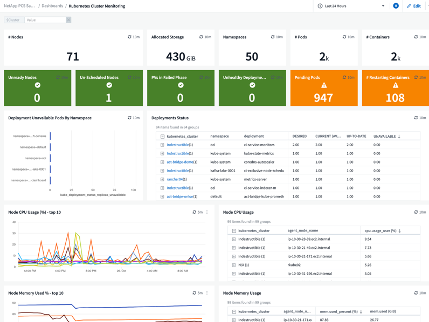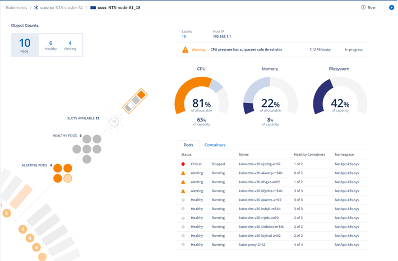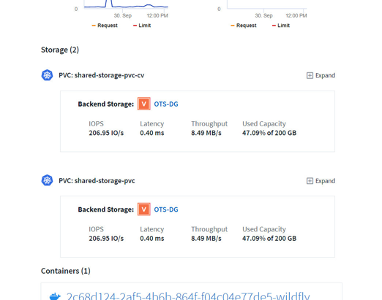Subscribe to our blog
Thanks for subscribing to the blog.
October 27, 2020
Topics: Cloud Insights Advanced3 minute readKubernetes
NetApp has launched a new-and-improved, software-driven portfolio that unlocks the best of cloud, redefining how companies manage data, storage, and infrastructure in more powerful, cost-effective ways. We’ve figured out innovative ways for companies to better optimize their mission-critical enterprise data, whether in the cloud or in data centers.
A key part of this optimization is monitoring with NetApp® Cloud Insights. Cloud Insights is a software-as-a-service (SaaS) tool that helps you quickly find performance problems and optimize usage of your cloud workloads.
Cloud Insights has features for collecting, visualizing, and alerting on metrics across your entire technology stack. It can cover multiple vendors and platforms across all your infrastructure, resources, and services, on premises and in the cloud, so you’re supported regardless of where your shared hybrid strategy takes you. Cloud Insights can quickly inventory your resources, figure out their interdependencies, and assemble a topology of your environment. You have end-to-end visibility into what infrastructure resources are supporting which applications and business units.
Naturally, this visibility includes comprehensive support for Kubernetes as well, and Cloud Insights can collect extensive metrics and create detailed visualizations and alerts.

The Kubernetes experts who know what to look for can identify health and performance issues early and perform corrective action before the application is affected.
But it’s fair to say that Kubernetes has a reputation for a steep learning curve, so for non-experts, speeds and feeds like these might not be particularly actionable. If you use only these specialized views, you risk creating new silos in your organization. You can’t afford to do this when you need to take advantage of shared tooling and skillsets to control cost.
With Cloud Insights, we’re addressing this issue head-on with the newly launched Kubernetes cluster explorer. This component makes Kubernetes easy to understand and navigate for anyone, regardless of their expertise or technical background.
The cluster explorer maps out the topology of not only the cluster, but also the infrastructure it's using - particularly the storage. Cloud Insights automatically builds a dynamic view of issues and lets you get to the root of them by following a simple, connect-the-dots interface. When you receive an alert or just get reports of poor performance, you can use Cloud Insights to follow the red to the root cause of the issue.

If you’re the expert, you can then use the expert views shown here to troubleshoot and remediate. But if you aren’t, you can still see the issue and identify the container at fault. This capability isn’t possible with dedicated Kubernetes tooling.
Cloud Insights automatically links the back-end storage to persistent volumes. So, not only can you troubleshoot storage issues more easily and determine whether the problem lies within the cluster or on the underlying infrastructure; you can also attribute and control usage of your storage.

This link between persistent volumes to the storage infrastructure is a big blind spot for a lot of tooling. Yet it’s so important to control utilization and performance in a complex environment.
With Cloud Insights, you’re using the same tool to monitor your storage, regardless of vendor; compute resources on premises or in the cloud; and the applications running on your cluster. It gives everyone in your organization a single source of information for managing the environment — whether they’re the subject-matter expert (SMEs) for Kubernetes or storage, or the managers trying to keep tabs on it all.
Whether you’re a seasoned Kubernetes pro or are just starting to work with it, you can check out these features in your own environment by activating a free trial of Cloud Insights. It’s based in the cloud, so there’s no infrastructure to provision or software to install, and you can get up and running in no time at all.
Try Cloud Insights Kubernetes monitoring with our 30-day free trial.
